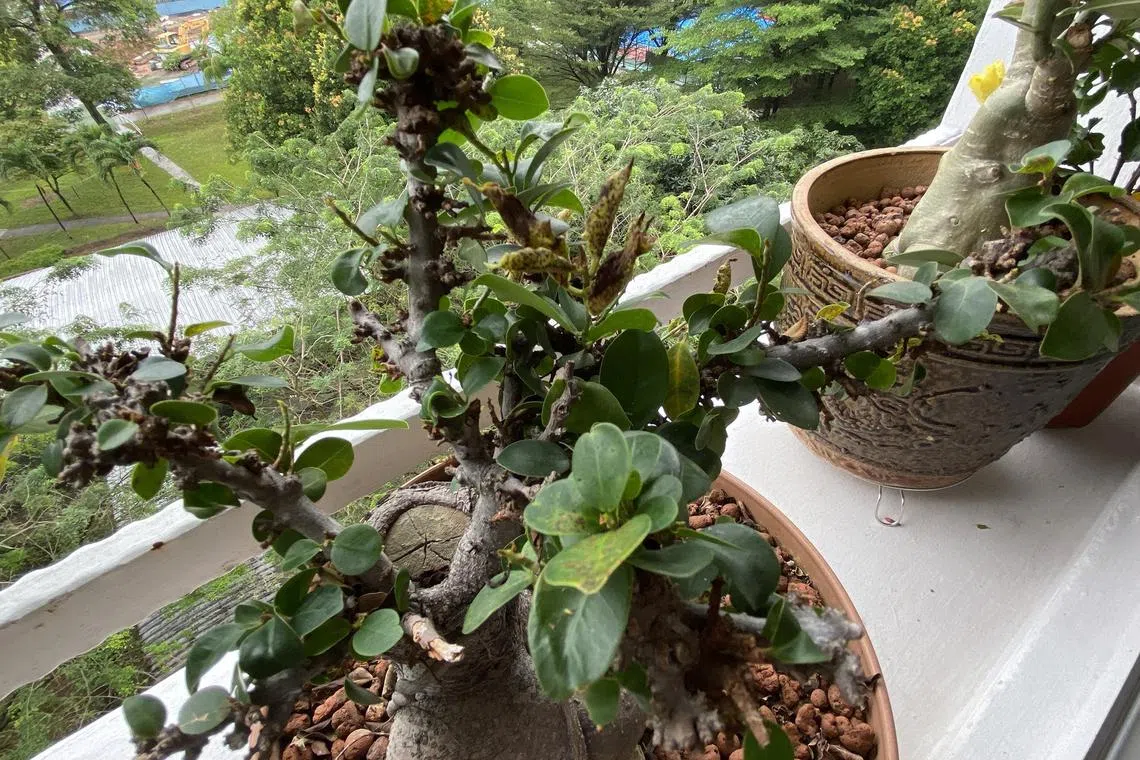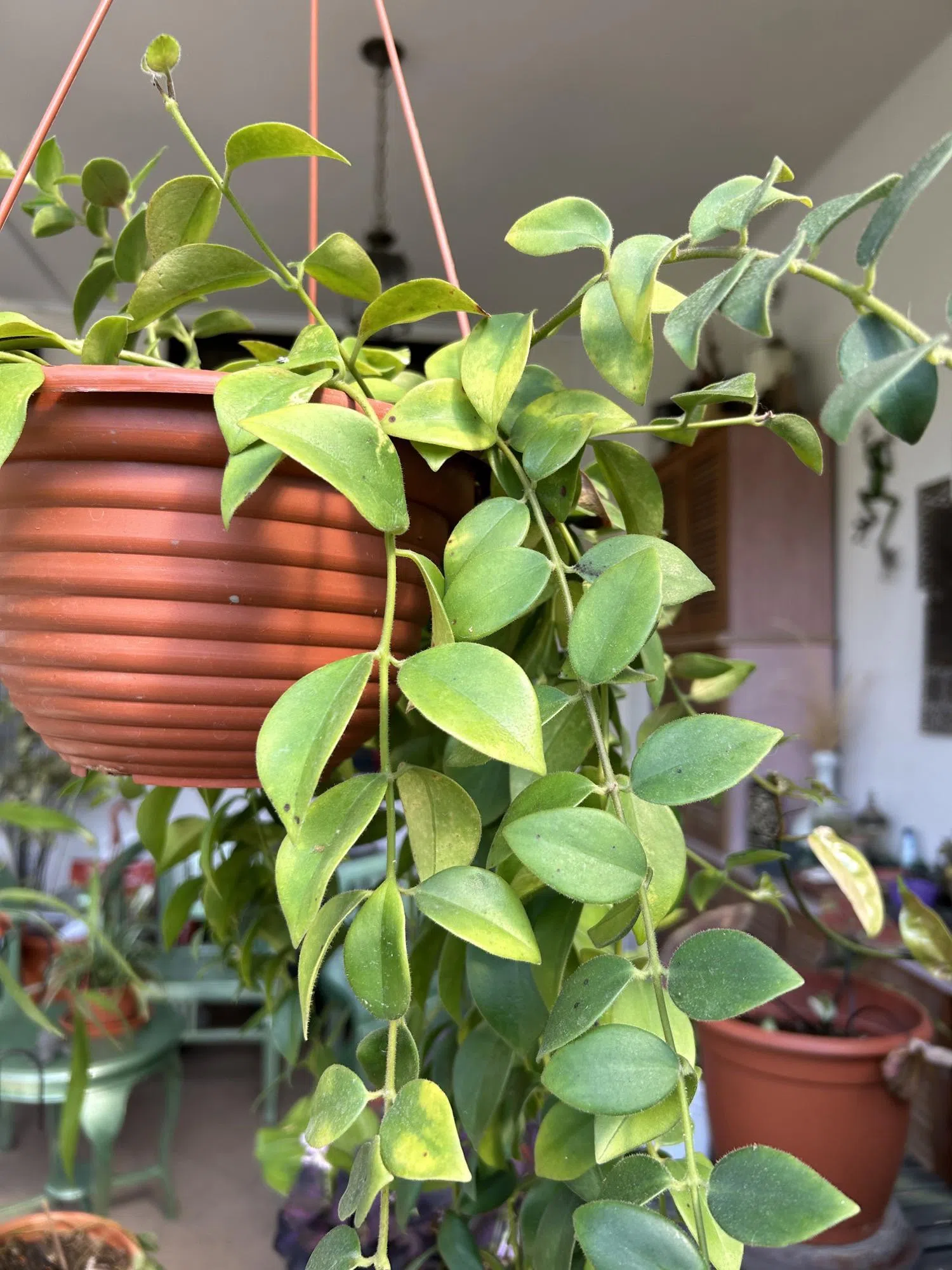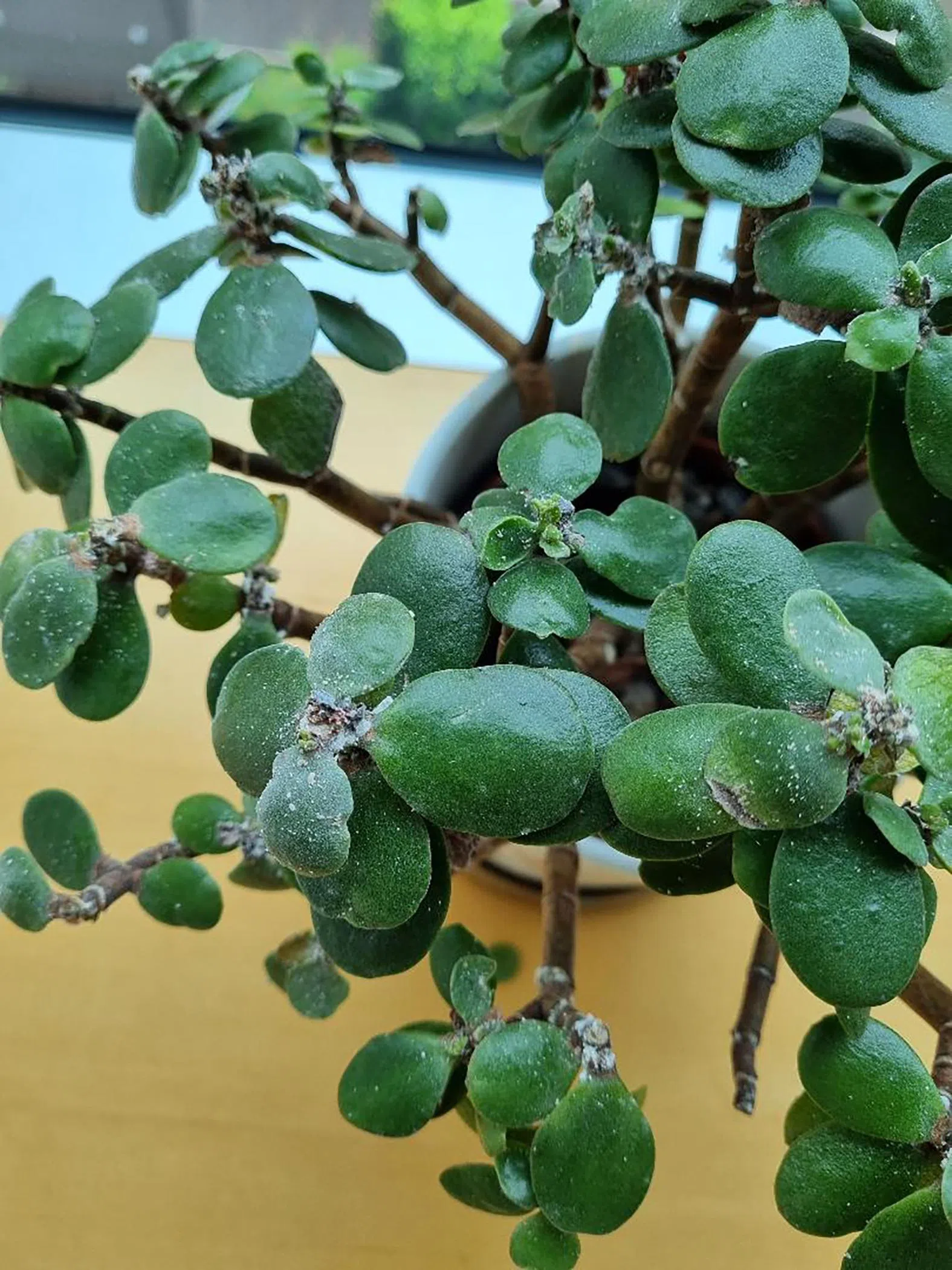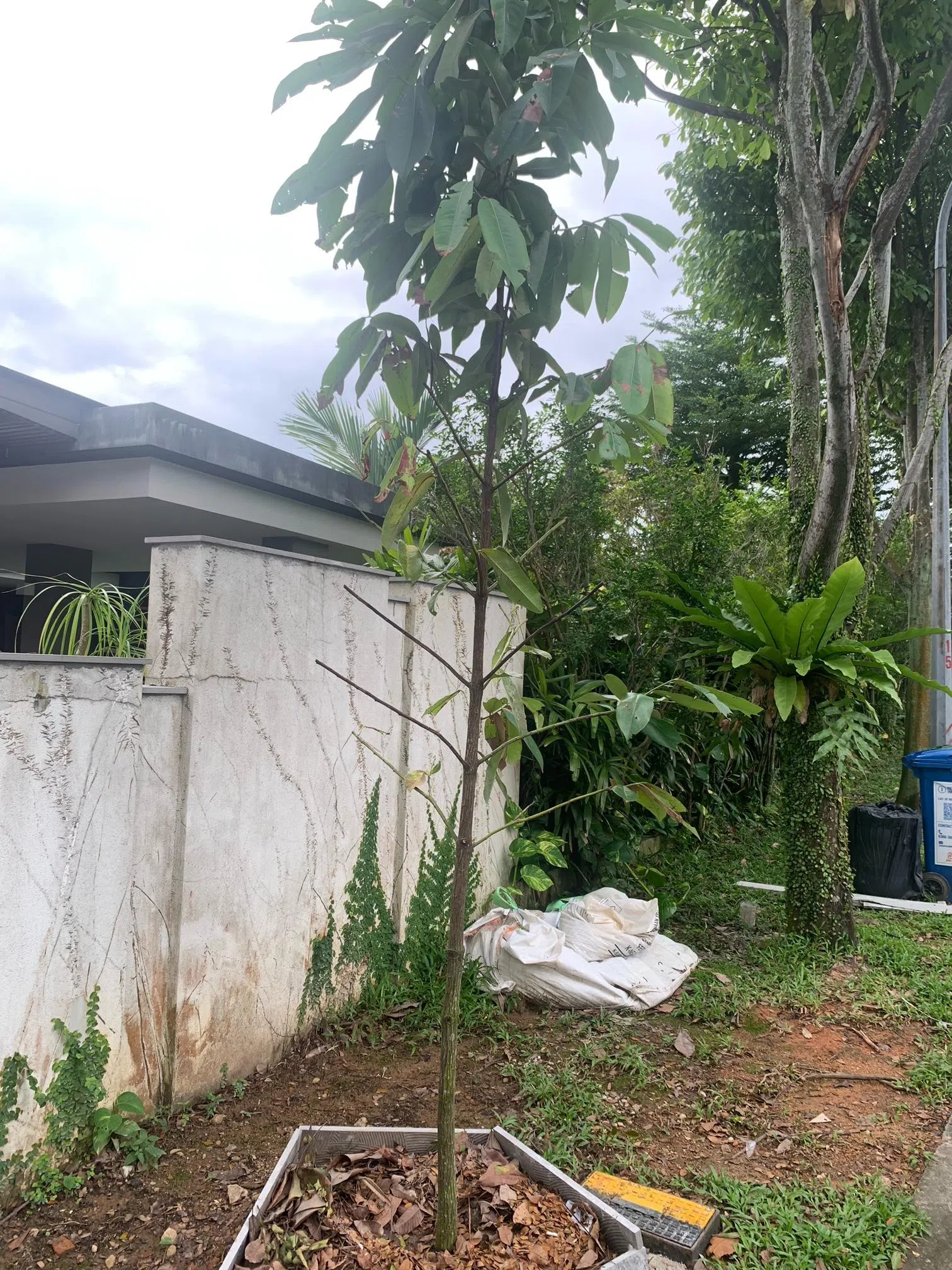Root Awakening: Ficus may be infested with pests, lipstick plant may need cooler growing spot
Sign up now: Get ST's newsletters delivered to your inbox

The curling leaves of this Ficus species could be due to minute pests that are feeding on the sap and causing plant tissue to deform.
PHOTO: JOSEPHINE GOH
Wilson Wong
Follow topic:
Check for minute pests infesting affected plant portions
This potted plant used to grow very well and I prune it quite often. Recently, the new shoots are curly with yellow and brown dots on the leaves. I pruned it, but the new shoots have the same symptoms. Why did this happen and how do I resolve it?
Josephine Goh
The plant is a Ficus species that is commonly trained to look like a bonsai specimen. The curling of new foliage may be due to nutrient deficiencies, such as those of boron and calcium. If you have been fertilising your plant and the growing media is within the slightly acidic pH level range and not compacted, this should not be a cause of the issue mentioned.
Examine the affected shoots with a hand lens or an appropriate tool that allows you to check for minute sap-sucking pests that may have caused the damage.
Pests such as aphids, thrips, psyllids and mealy bugs can infest young, tender developing parts of the plants, where they feed on sap and cause the tissue to deform. They reside on the underside of leaves which curl up and become hiding spaces, making it difficult to spot them and for pesticides to reach and kill them.
If you notice these pests on your plant, you may want to prune the severely infested portions and use a systemic pesticide such as dinotefuran, which is available for sale at local nurseries. The pesticide is in a powdered form that is applied in the root zone.
Dissolve small amounts of the pesticide in water and use it to irrigate your plant. The water is taken up by the plant through the roots and into the sap and pests that feed on the sap will die as a result.
Lipstick plant thrives in cool and semi-shaded location

Lipstick plants thrive in a spot with filtered sunlight.
PHOTO: RAGHAVAN BEENA
My lipstick plant, which was bought more than a year ago, does not flower. What do I do?
Raghavan Beena
Your plant appears to have leaves with yellow portions. This could be due to a number of reasons.
First, is your plant grown in a location that gets hot, direct sunlight? Lipstick plants prefer to be grown in a shadier spot with filtered sunlight – intense sunlight will burn the leaves. However, do not grow it in deep shade.
Next, how long has the plant been in the current growing media? The growing media might have broken down and its physiochemical properties would have changed, leading to nutrient deficiencies in your plant. You may want to check and repot the plant in a porous growing media as lipstick plants are mostly epiphytes.
Note that some species originate from cooler environments. Depending on the species you are growing, some will not flower frequently in Singapore’s hot lowland climate. Your plant may bloom if there is another cold spell that often happens during this time of the year.
Jade plant may be infested by sap-sucking insects

The mouldy symptoms of the jade plant could be due to the presence of sap-sucking pests.
PHOTO: ELLEN CHOO
I have several pots of jade plant, but after a while, the plants turned mouldy. How can I prevent this from happening to my new plants?
Ellen Choo
Your jade plant may be infested with sap-sucking insects such as mealy bugs or scale insects.
Try removing the pests using a soft brush to reduce the number you need to deal with. Next, spray your plant with a diluted solution of castile soap or summer oil pesticide. Ensure all parts of the plant are thoroughly covered. Repeated applications are needed to ensure adequate control of the pests.
Your plant appears rather etiolated, where the growth is stretched and the leaves are floppy. Note that this plant needs to be grown under direct sunlight for optimal plant health. A plant that has poor vigour and health will be more pest-prone.
Poor planting technique and change in environment may have stressed tree

A change in the growing conditions can cause the Diospyros malabar tree to exhibit stress and symptoms such as browning leaves.
PHOTO: AMOS CHAN
Two weeks ago, I planted these Diospyros malabar. I watered them daily initially, but stopped when it rained. What is the cause of the leaves at the lower end turning brown and dropping off? Does the mulch below have anything to do with it?
Amos Chan
When planting the tree, did you do so with the root ball intact? If the root ball falls apart or the roots have been disturbed, it can cause the tree to go into shock as its root system has been damaged. Also, ensure that the site is not waterlogged.
The change in growing conditions can cause trees to become stressed. The tree may have been produced in a nursery which had different environmental conditions than that of the growing site. The leaves with burnt portions are an indication that the tree suffered a form of heat and moisture stress during hot weather at the new planting site.
If the tree has been cared for, it should recover gradually as it adapts to the new growing environment.
Take care not to overwater, which can drown the tree. Mulch in the form of good quality compost or leaf litter should be applied some distance from the trunk and around the root zone on the ground surface. A mulch layer can help to reduce evaporation and keep the roots cool.
Finally, note that this species does grow quite large and has a spreading crown. In time, its canopy may spread beyond the fence line. Its root system may also affect it too. Do ensure your neighbour is informed and agreeable with the planting location of your tree.
Ensure desert rose is situated in a sunny spot for optimal growth
About two months ago, I repotted my desert rose into a bigger container. I was careful not to damage its roots and let the plant air-dry for a few days before putting it into the bigger pot. I added perlite to the potting soil to ensure good drainage. There were small shoots sprouting after a couple of weeks. I pruned a few thin stems. Recently, I noted some stems turning yellow and soft. What did I do wrong and how can I stop the other stems from “rotting”?
Lim Joo Joon
The desert rose prefers to grow in a sunny location with direct sunlight for at least six hours daily.
If, after repotting your plant, the new shoots are thin, and they turn yellow and soft, it is a sign the plant may not be getting sufficient sunlight.
It is also important to not over-pot your plant. You should consider the size of the plant and pick a pot of the right size. If a plant is grown in an overly large pot, the bigger amount of growing media will hold more water, which may not dry out in time. This can cause roots to rot over time due to wet feet.
In the tropics, desert rose plants are often grown in well-drained media. Gardeners use coarse burnt earth, akadama and pumice to create a very porous, inorganic growing substrate. Reduce the amount of organic material in your growing mix as they tend to be fine and hold an excessive amount of moisture in the root zone.
Answers by Dr Wilson Wong, an NParks-certified practising horticulturist, parks manager and ISA-certified arborist. He is the founder of Green Culture Singapore and an adjunct assistant professor (Food Science & Technology) at the National University of Singapore.
Have a gardening query? E-mail it with clear, high-resolution pictures of at least 1MB, if any, and your full name to . We reserve the right to edit and reject questions.

